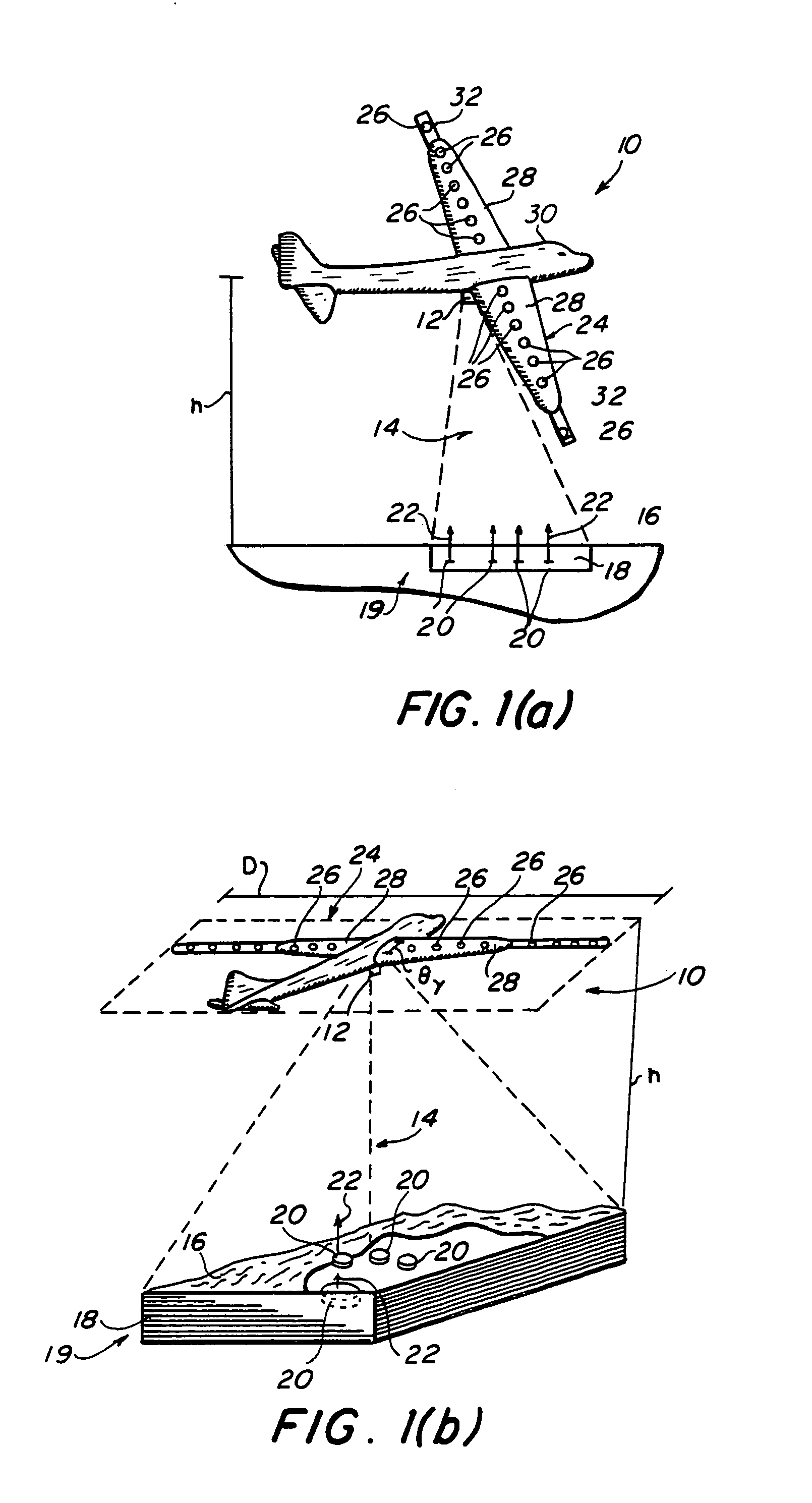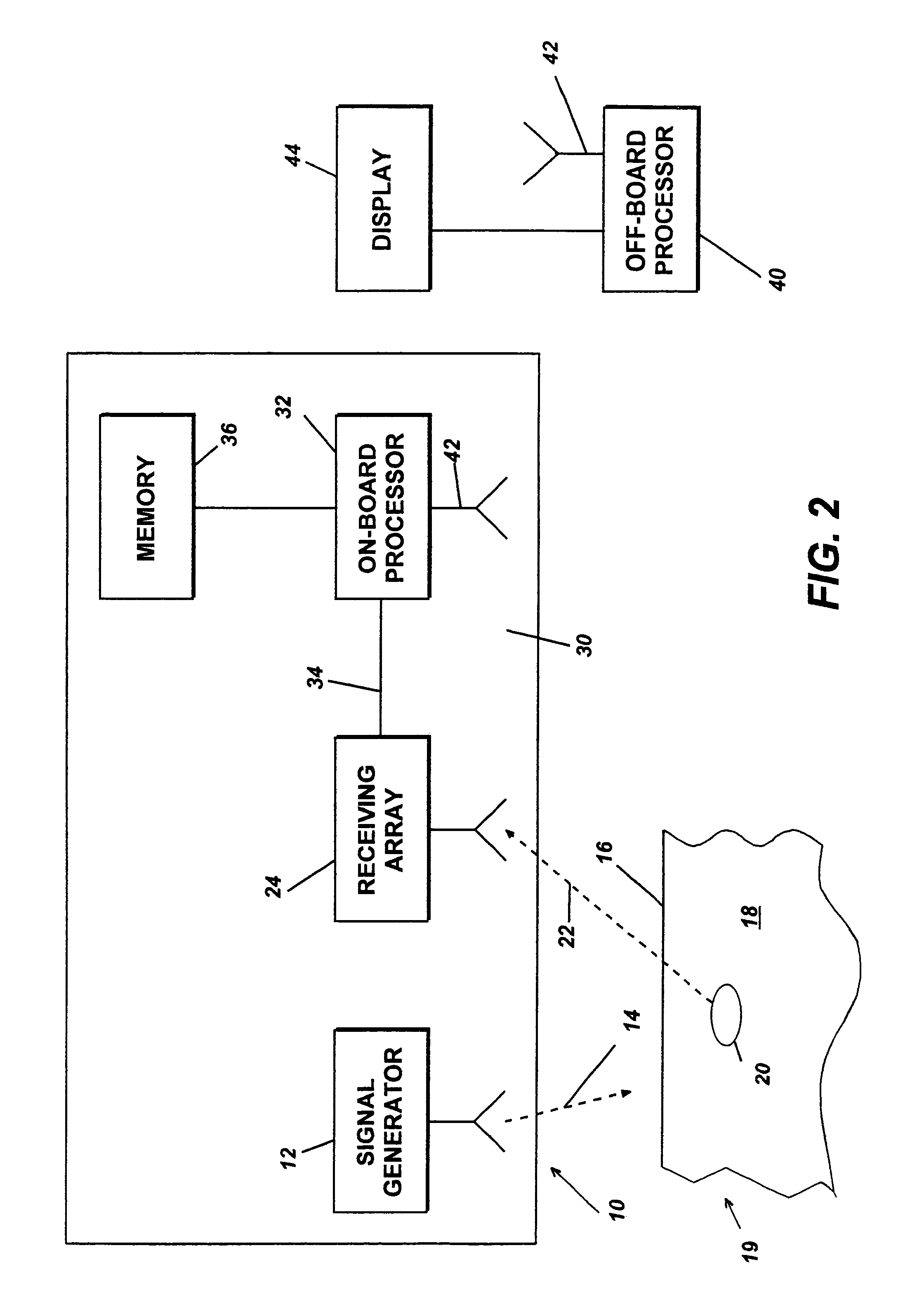Three-dimensional synthetic aperture radar for mine detection and other uses
a synthetic aperture radar and mine detection technology, applied in the field of three-dimensional imaging, can solve the problems of affecting reducing the detection accuracy of radars, so as to achieve enhanced image resolution
- Summary
- Abstract
- Description
- Claims
- Application Information
AI Technical Summary
Benefits of technology
Problems solved by technology
Method used
Image
Examples
Embodiment Construction
[0020]Referring now to the drawings, and in particular to FIGS. 1(a) and 1(b), illustratively depicted therein is radar system 10 according to the present invention. Radar system 10 includes radar transmitter 12 which generates radar signal 14 of at least three gigahertz, corresponding to the S-band and X-band carrier frequencies. Preferably, the frequency is within the range of three to ten gigahertz to provide good resolution with acceptable signal attenuation. However, higher frequencies can be used to provide enhanced resolution where signal attenuation is accommodated.
[0021]The radar signal 14 is directed towards the surface 16 of the underlying ground 18 of a target area denoted 19. Radar signal 14 penetrates surface 16 and reflected signals 22 are produced by the radar signal 14 reflecting off of the surface of buried objects indicated at 20.
[0022]An antenna array 24 is formed of a plurality of receiving antennas 26 which receive reflected signal 22. Receiving antennas 26 are...
PUM
 Login to View More
Login to View More Abstract
Description
Claims
Application Information
 Login to View More
Login to View More - R&D
- Intellectual Property
- Life Sciences
- Materials
- Tech Scout
- Unparalleled Data Quality
- Higher Quality Content
- 60% Fewer Hallucinations
Browse by: Latest US Patents, China's latest patents, Technical Efficacy Thesaurus, Application Domain, Technology Topic, Popular Technical Reports.
© 2025 PatSnap. All rights reserved.Legal|Privacy policy|Modern Slavery Act Transparency Statement|Sitemap|About US| Contact US: help@patsnap.com



